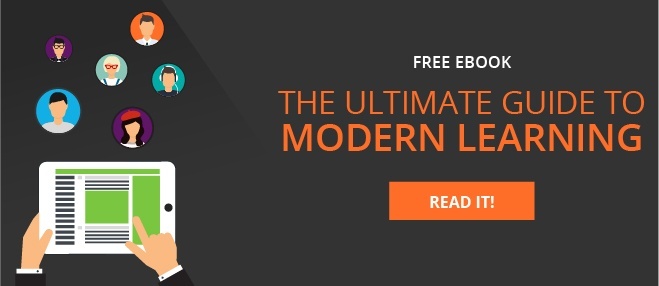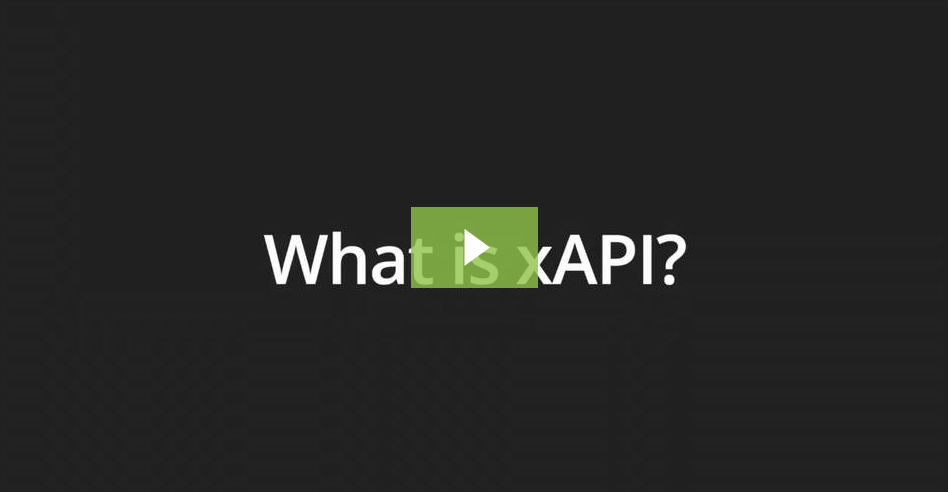eLearning, xAPI - The New Sheriff in Town
By now, most learning professionals have heard of the Experience API learning standard (also referred to as “xAPI” or “Tin Can”). If so, here’s what you may, or may not, have heard so far. First, the Experience API is the designated successor to the venerable SCORM standard that has dominated eLearning for decades. Second, the Experience API allows nearly all learner actions to be tracked as learning activities, broadening the scope with which learning managers can review and assess their training and education methods.
Truly fascinating stuff, however the reality is many learning managers meet this news with something of a shrug. Sure, evolving beyond quiz-based assessment to track learner progress sounds intriguing. You may even imagine some creative ways to assess learning comprehension. But the reality is we are running operational organizations and there are courses needing to be delivered NOW to existing learners who need brought up to speed as quickly and effectively as possible. Who has time for a paradigm shift?
There’s no doubt eLearning will continue to evolve in fascinating ways, but what can we do immediately? There is a capability within the Experience API that most teams have overlooked. And those who have realized it are experiencing a significant, immediate, and real-world impact on their organizations and the learners within. That is - drumroll please - a completely offline learning experience. You read that right… your employees can work through your learning modules without that horrible spinning wheel called “buffering,” while the course tries to connect to internet. Throw a streaming video in there that has to load and your millennial learner’s patience (cough attention span) has expired and they’ve moved on.
But wait, some will say, how can that make sense? Doesn’t eLearning mean online learning? A little explanation may be appropriate here, because this truly is a paradigm shift, and a pretty powerful one at that. Traditionally, eLearning has meant online learning, because it had to. SCORM, the old standard, is a strictly online experience, built from the ground up to support web-based courses. It’s impossible to deliver a SCORM learning package offline to a local device. With the Experience API, it is now possible to take all the elements of an online course: interactions, navigation, animations, video, images, even quiz questions, and wrap them up into a single package. That “package” can then be downloaded locally to a mobile device, and played back whenever the end user needs it, even if the device is NOT connected to the internet. And quiz questions? Those are captured in the device’s local memory, and synced up to your Learning Record Store (LRS) the next time the device connects to an appropriate network.
This is a big, big deal for organizations whose learners cannot count on a consistent, robust internet connection to experience training. And even in 2017, that includes most organizations; mobile workforces, travelers in the air, restaurant and retail teams, field technicians, drivers - the list of potential applications goes on and on.
Additionally, the mobile compatibility is equally significant. Consider this, the common SCORM 1.2 standard dates back to 2004! In today’s fast-paced tech world, that’s a lifetime ago. The first iPhone® didn’t even come out until 2007. 2004 was well before smartphones and tablets were even in people’s imagination, let alone the dominant technologies they are today. Also anyone who has tried to get SCORM content to play effectively on mobile devices has probably experienced some therapy demanding pain. If your blood is starting to boil thinking about your frustrating experiences here, there’s some good news for you… the Experience API was designed with mobile applications in mind.
As exciting as this all sounds, any time we’re talking about localizing content to a mobile device, information security needs to be near the top of the list. How can you ensure your company’s intellectual property doesn’t walk away when a learner (or device) leaves my organization? Having a solution in place to ensure content is (a) delivered securely and, (b) can be remotely deleted from the device is a critical concern. At the very least, remote removal of content is important to just to make sure the most current material is available and what is being used in the field. But when the unfortunate inevitably happens, you need to be confident important information is protected from your competitors and other inappropriate uses.
Another consideration is the confirmation when a mobile device does reconnect, your learning data is pulled back in a standards-compliant manner. Delivering eLearning all by itself may have some value, but ultimately you need to be able to track and reward learner progress, and identify potential issues in your learning organization. To be effective, your Experience API mobile delivery platform will need the ability to capture learning data and make it available to your xAPI-compatible LMS, business intelligence infrastructure, or to a reporting mechanism giving you the insight you need. The Experience API has become the standard for a reason, and the supporting ecosystem of learning tools continues to grow. However, you can’t play without sticking to the standard framework, so developing custom solutions internally need to be considered carefully.
All that said, there is more potential than any of us can dream of by untethering eLearning from traditional, streaming-based delivery methods. It’s not typically the first thing we think of when we hear about the Experience API, but the capability to deliver an offline learning experience has become the breakthrough many learning teams need as they attempt to train new generations entering the workforce and evolve their education models accordingly. With an effective mobile strategy that does not depend on high bandwidth, learning can finally come out of the office, classroom or crew room and move out to the actual point of need.
Finally, your team can start creating real opportunities to blend learning with operations in ways never before possible. In a post-pc world that is rapidly going mobile, learning and development teams are starting to look ahead to the endless possibilities the Experience API opens up.
How important is all this? Well, suppose an airline provided security folks with a mobile device and some illustrative real-time videos of handling passenger removals from planes? Pretty sure clubbing the customer over the head, then dragging them off the plane forcefully while the entire cabin took videos on their cell phones would have been highlighted as the wrong way to handle the situation, one that could cost the company millions of dollars in settlement charges and unprecedented social backlash. Would have been pretty handy, probably. Just saying.
Is your team able to look ahead yet?





